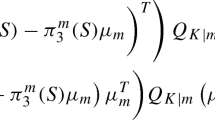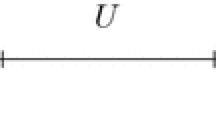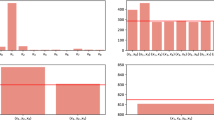Abstract
In this paper, we describe two methods of discrimination based on “MSE ratio” and “regression,” respectively, and an algorithm of orthogonally stepwise discrimination. The method is not limited by the assumption that the sample covariance matrix is not ill-conditioned or singular, and by any assumption about the distribution of each population as well. So, it has wide range of application to various problems, particularly, to the problem of discrimination with both quantitative and qualitative variables. After variables are selected in the procedure of stepwise discrimination, they need not be rejected. Several examples have been calculated by using the method, and the results are quite satisfying.
Similar content being viewed by others
References
Anderson, T. W., 1984, An Introduction to Multivariate Statistical Analysis, 2nd ed.: Wiley.
Gnanadesikan, R., and Kettenring, J. R. 1989, Discriminant Analysis and Clustering: Stat. Sci. v. 4, n. 1, p. 34–69.
Lachenbruch, P. A., 1975, Discriminant Analysis, Hafner, New York.
Wang Xue-Ren, 1982, Multivariate Statistical Analysis of Geological Data (in Chinese): Science Press, p. 179–206.
Author information
Authors and Affiliations
Rights and permissions
About this article
Cite this article
Wang, X., Zhang, J. Two methods of orthogonally stepwise discrimination and their applications. Math Geol 24, 203–218 (1992). https://doi.org/10.1007/BF00897032
Received:
Accepted:
Issue Date:
DOI: https://doi.org/10.1007/BF00897032




